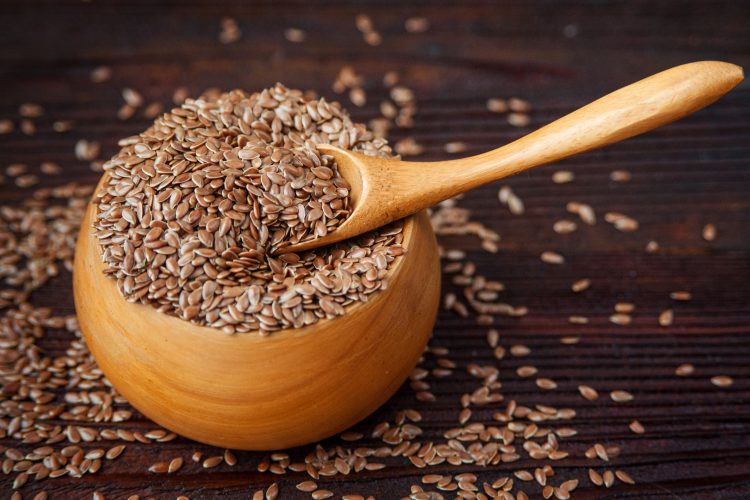Flaxseed allergy on the rise, study claims
- Like
- Digg
- Del
- Tumblr
- VKontakte
- Buffer
- Love This
- Odnoklassniki
- Meneame
- Blogger
- Amazon
- Yahoo Mail
- Gmail
- AOL
- Newsvine
- HackerNews
- Evernote
- MySpace
- Mail.ru
- Viadeo
- Line
- Comments
- Yummly
- SMS
- Viber
- Telegram
- Subscribe
- Skype
- Facebook Messenger
- Kakao
- LiveJournal
- Yammer
- Edgar
- Fintel
- Mix
- Instapaper
- Copy Link
Posted: 13 November 2023 | Grace Galler | No comments yet
According to a study, flaxseed allergies are appearing more frequently in adults but “not as often in children”.


A study carried out by the American College of Allergy, Asthma and Immunology has found that flaxseed allergies are appearing more frequently in adults but “not as often in children”.
Flaxseed is a popular ingredient in baked goods and other food products and has a variety of perceived health benefits. In some recipes, flaxseed is even used as a substitute for eggs.
However, two new cases are being presented at this year’s American College of Allergy, Asthma and Immunology (ACAAI) Annual Scientific Meeting in Anaheim, Calif. which reveal that flaxseed can cause allergic reaction both after being ingested and also after touching the skin.
The Food Standards Agency (FSA) lists the top 14 food allergens as celery, cereals containing gluten (such as wheat, barley and oats), crustaceans (such as prawns, crabs and lobsters), eggs, fish, lupin, milk, molluscs (such as mussels and oysters), mustard, peanuts, sesame, soybeans, sulphur dioxide and sulphites. Though flaxseed is not apart of this list however, The Los Angeles Allergist has labelled it a “rare though emerging allergen”.
Commenting on the findings of the study, Alana Xavier De Almeida, MD, ACAAI member and lead author of the paper, titled “IgE Mediated Flaxseed Allergy in Non-Atopic Toddler Polysensitized to Tree Nuts but Tolerating Other Seeds”, said: “Flaxseed allergy has been reported in adults, but not as often in children.
“We saw an 18-month-old patient with a rash throughout his face and chest 20 minutes after eating a packet of oatmeal with premixed flaxseed. This was the first time the patient had eaten flaxseed, and the event self-resolved within four hours.”
Explaining the study further, Dr De Almeida shared that a skin prick test was performed revealing positive results for various nuts and seeds, including flaxseed and evaluation also included measurement of serum IgE levels.
“Based on the history and test results, a diagnosis of an IgE mediated reaction to flaxseed was made. A direct oral flaxseed challenge test was offered to confirm allergy but was never performed due to parents’ preference not to proceed,” continued De Almeida.
The second case was titled “Contact dermatitis of the hands caused by flaxseed in artist’s paint,“ involved a patient who was seen for recurrent rashes on her hands. The patient was an artist painting with oil paints, with a review of items used revealing that her oil paints contained Linseed/flaxseed-based oil.
“Her hand dermatitis was severe and disrupted her painting. She exclusively used oils to paint. We asked her to bring all items and products she used while working on her art pieces. Patch testing was done using test wells taped on the back for 48 hours. Flaxseed reacted significantly at her patch test site at 48 and 72 hours,” said allergist Richard Harris, MD, ACAAI member and lead author of the paper.
The researchers noted that both cases illustrate that flaxseed, used in food products and art supplies, “should be considered as a trigger for an allergic reaction”.
Despite flaxseed not being among the top 14 food allergens, emerging cases such as those presented at the ACAAI Annual Scientific Meeting, emphasise its capacity to induce allergic reactions both through ingestion and skin contact. These findings could spark industry concern and encourage more to recognise flaxseed as a potential trigger for allergies, whether in food products or artistic materials, prompting a reconsideration of its use and awareness within the medical community and among consumers.
Related topics
Allergens, Food Safety, Health & Nutrition, Research & development, The consumer, World Food









